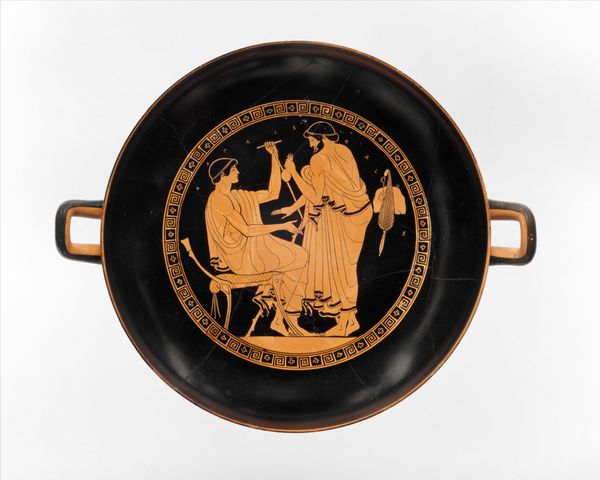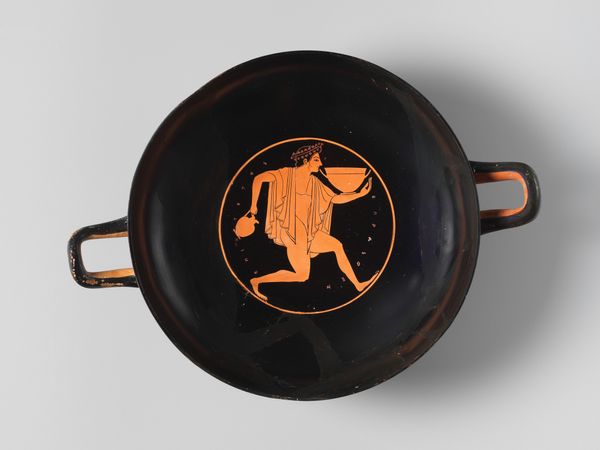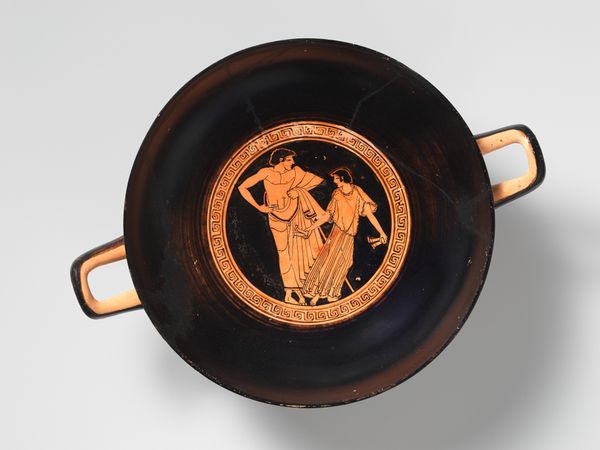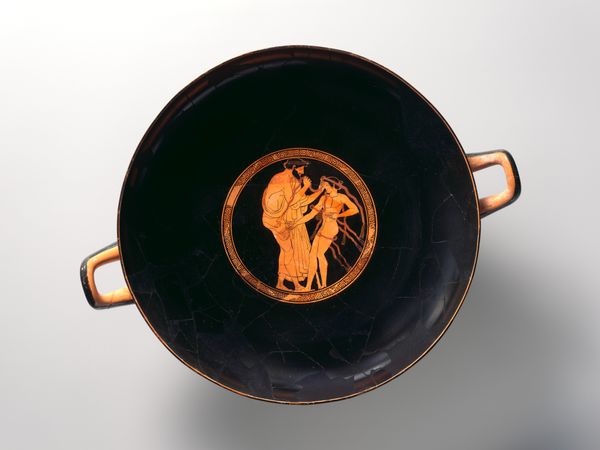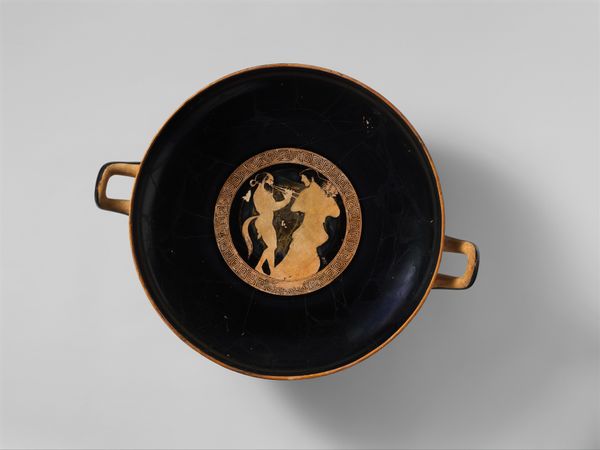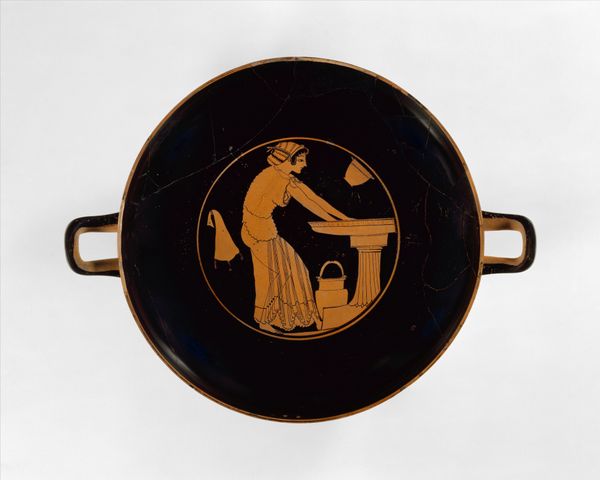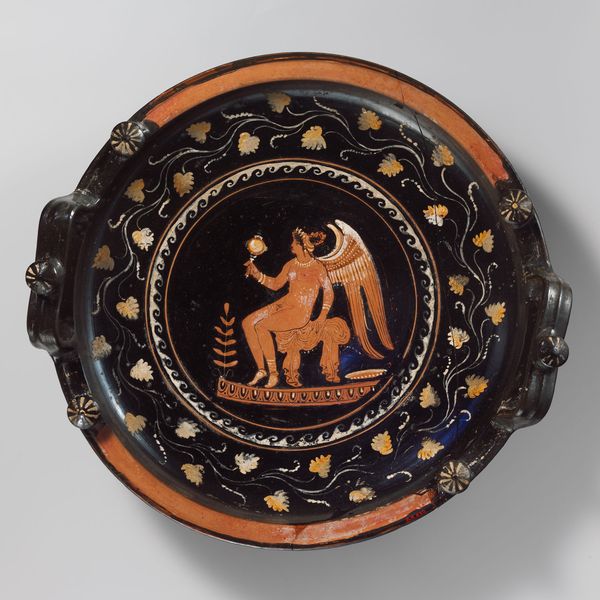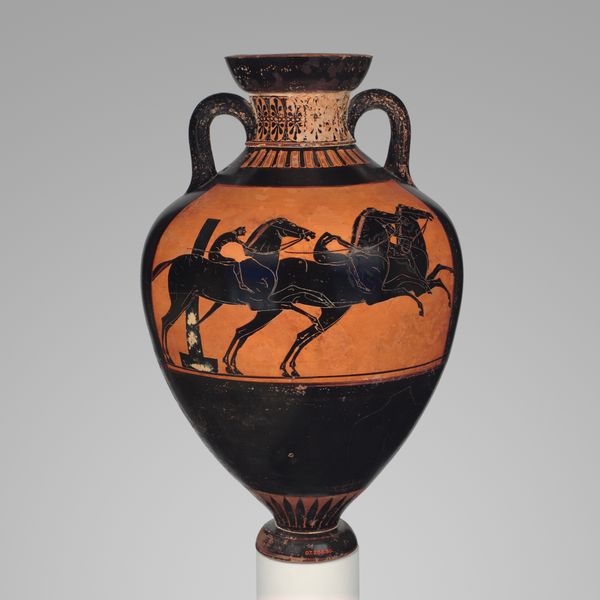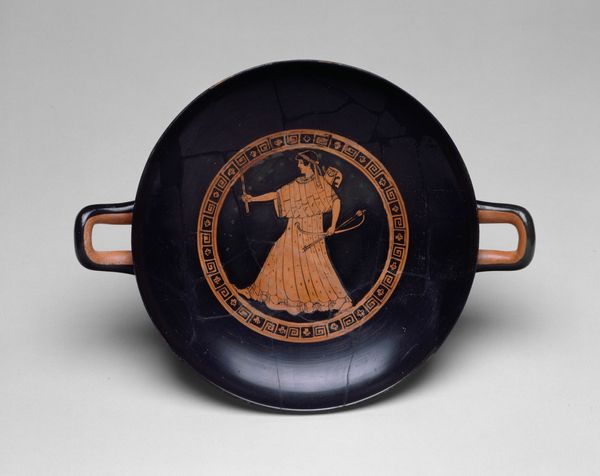
drawing, ceramic, terracotta
#
drawing
#
greek-and-roman-art
#
ceramic
#
figuration
#
roman-art
#
geometric
#
ancient-mediterranean
#
horse
#
terracotta
Dimensions: H. 3 7/8 in. (9.80 cm) D. 10 1/16 in. (25.6 cm)
Copyright: Public Domain
Curator: Here we have a terracotta kylix, or drinking cup, from around 510 BC. It resides in the collection of the Metropolitan Museum of Art. Editor: My immediate sense is one of stark contrast and focused intensity. The ochre figure jumps out against the absolute black, demanding attention. Curator: The technique is known as red-figure pottery, where the figures are left in the natural red of the clay while the background is painted black. What strikes me is the narrative packed into such a small space, especially concerning social status. Editor: Indeed, the horse and rider are potent symbols. The horse, historically linked to wealth and aristocracy, signals power. And look at the rider's distinctive helmet, almost rigidly in place. I’m curious about what exactly he is conveying through his apparel and the horse’s positioning. It reminds me a lot about the gender inequality in the army. Curator: Absolutely. These objects are never just decorative; they tell us about the value systems and hierarchies of the time. What do you make of the way they're positioned, one atop the other, so controlled? It certainly gives us insight to ancient Greek views about man, horse, and control, don't you agree? Editor: I concur; their relationship definitely feels mediated. I am caught by the repetitive black strokes under the horse. They do look symbolic, almost like an array of shields under them. And how fascinating that such everyday objects carry the weight of culture so demonstrably! Curator: The piece resonates strongly across millennia. Reflecting upon this piece I am compelled by how visual representation has consistently influenced societal norms, dictating the roles ascribed to individuals and creatures throughout the historical context. Editor: I am interested in the way our response to it changes with time, how contemporary theories may interact and react when face-to-face with a traditional artwork and challenge previously existing notions and conventions. Thank you!
Comments
No comments
Be the first to comment and join the conversation on the ultimate creative platform.
